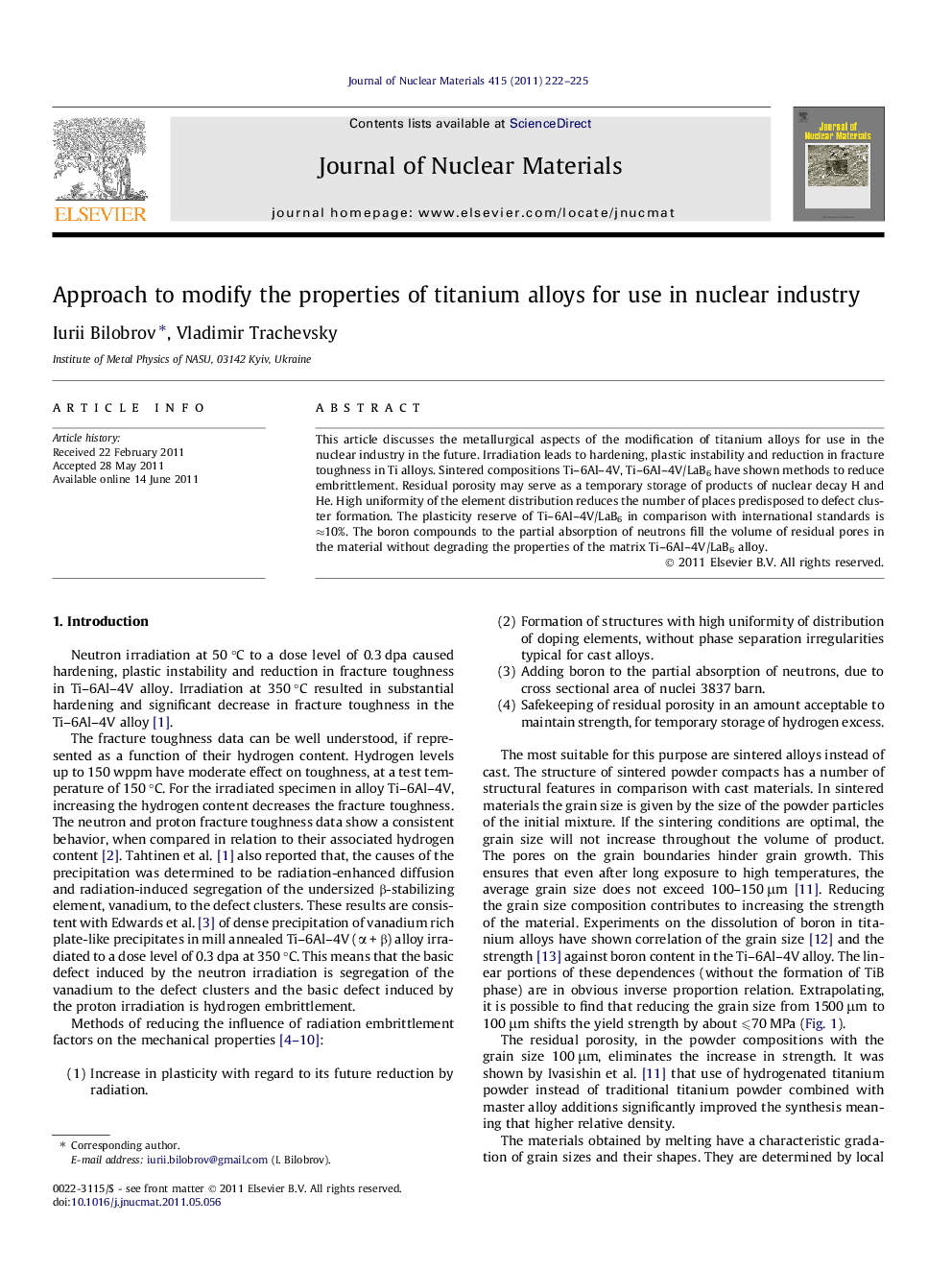| Article ID | Journal | Published Year | Pages | File Type |
|---|---|---|---|---|
| 1566819 | Journal of Nuclear Materials | 2011 | 4 Pages |
This article discusses the metallurgical aspects of the modification of titanium alloys for use in the nuclear industry in the future. Irradiation leads to hardening, plastic instability and reduction in fracture toughness in Ti alloys. Sintered compositions Ti–6Al–4V, Ti–6Al–4V/LaB6 have shown methods to reduce embrittlement. Residual porosity may serve as a temporary storage of products of nuclear decay H and He. High uniformity of the element distribution reduces the number of places predisposed to defect cluster formation. The plasticity reserve of Ti–6Al–4V/LaB6 in comparison with international standards is ≈10%. The boron compounds to the partial absorption of neutrons fill the volume of residual pores in the material without degrading the properties of the matrix Ti–6Al–4V/LaB6 alloy.
► The plasticity reserve of Ti–6Al–4V/LaB6 in comparison with international standards is ≈10%. ► Residual porosity may serve as a temporary storage of products of nuclear decay H and He. ► Reinforcing additives of LaBx and TiB phases fill the volume of large pores in the material without degrading the properties of the matrix.
